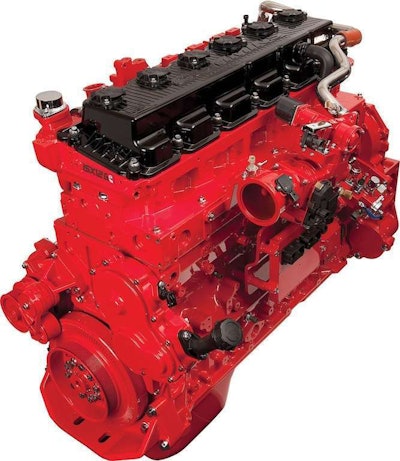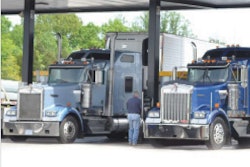 Cummins-Westport ISX12G
Cummins-Westport ISX12GThere are three versions of heavy-duty natural gas engine technologies available or in development in North America.
1. Cummins-Westport employs a spark-ignited engine, which works in a conventional manner: A fuel-air mixture entering the cylinder is ignited by a spark plug, providing lower compression ratios.
2. Navistar is working on a technology it calls Clean Air Power. It’s a dual-fuel system in which diesel and natural gas are fumigated in the compression chamber and mixed with diesel fuel injected into the cylinder on a displacement ratio to ignite the mixture. While the power curve is close to that of conventional all-diesel powertrains, there are weight and packaging issues since large amounts of two different fuel types have to be carried on the vehicle. This is an attractive option for fleets that have high-horsepower and torque requirements but still want to cut diesel fuel costs, Burke says.
3. Westport’s high-pressure direct-injection (HPDI) engine is offered in a big-bore 15-liter configuration based on the Cummins ISX diesel platform. The pure diesel combustion cycle uses a fuel injector in the cylinder. The engine looks exactly the same as a conventional diesel, but the injector sends diesel through one nozzle and natural gas through another.

At the end of the compression stroke, the engine is compressing 100 percent air with the same compression ratio as a conventional diesel. At that point, a minuscule amount of diesel is injected to initiate combustion. Next, through the same injector but a different nozzle, the bulk shot of natural gas enters the chamber and is ignited in a process that uses about 95 percent natural gas and 5 percent diesel.
In an on-road situation, that process could use even less diesel because the diesel injection is consistent. It goes in at the same rate all the time, so when under full power on the highway, the truck is using predominantly natural gas.
Click here to see the first part of this series, “Natural gas: Ready for prime time? Part 1”









